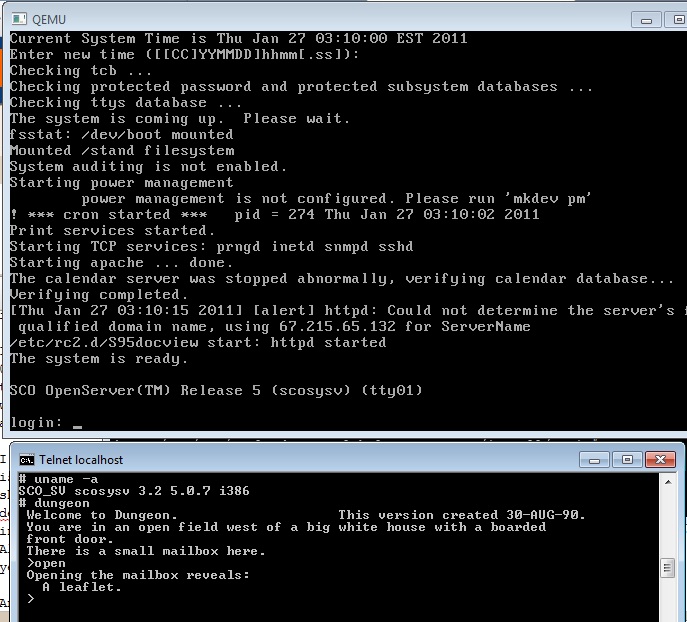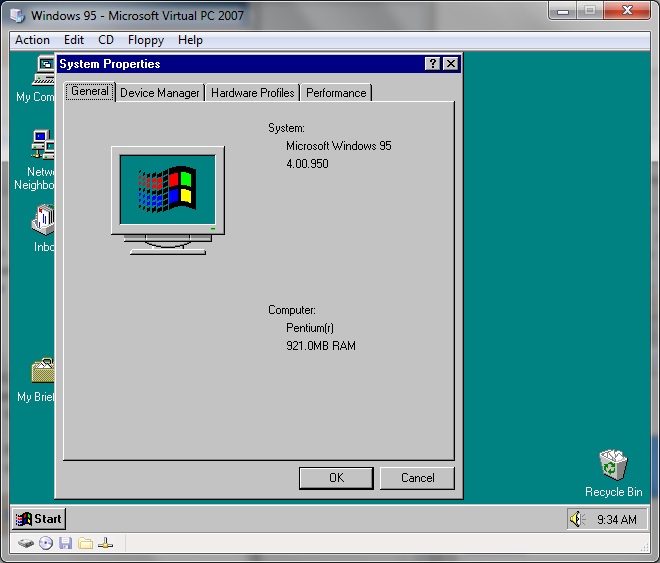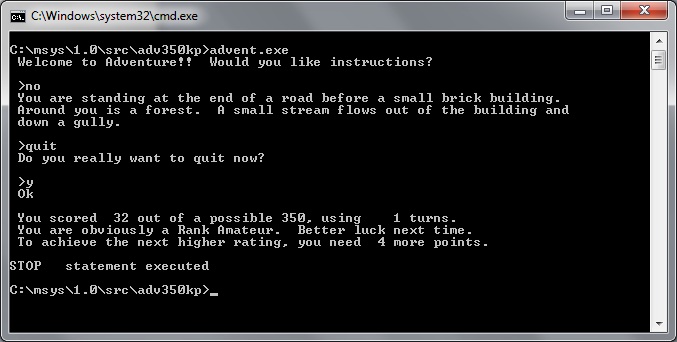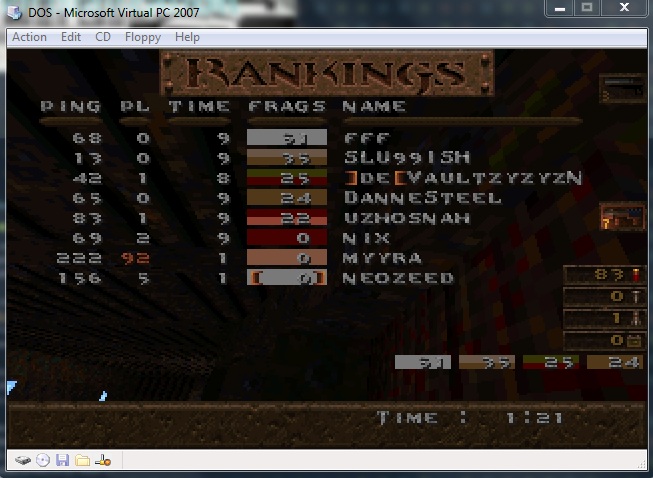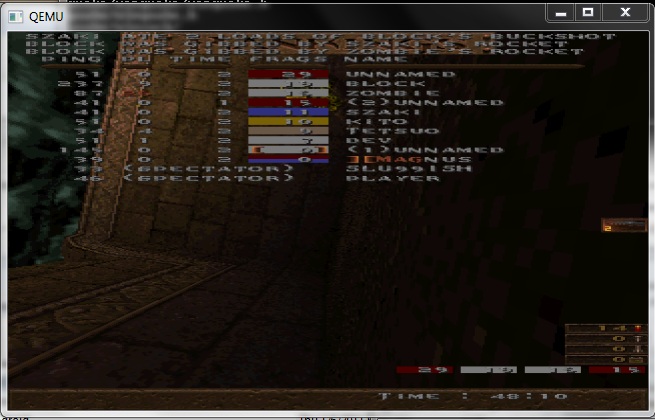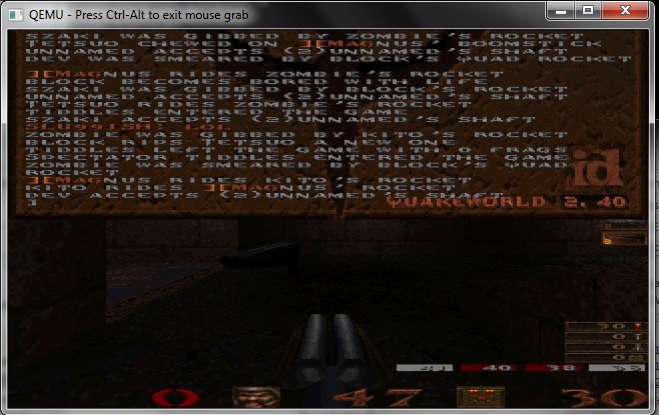Back in the day SCO offered eval CD’s but in recent times it’s been harder to find them.
But thanks to a post on the blog Sentinel – The Fix Is Out There, I’ve not only been able to download an eval CD of SCO OpenServer, but I’ve been able to verify that the exe’s I’ve been able to build for Xenix run on OpenServer.
One thing is for sure, if you really really wanted Xenix for whatever reason, OpenServer is really FAR more useful, as it not only runs XOUT binaries without fail, but it supports bigger disks, and includes TCP/IP in the build by default!!
I’ve installed it in Qemu, for some weird reason I couldn’t install the default installation on 0.13.0, however it installed without fail on Qemu 0.10.5. I installed using the AMD PCNet NIC, which the install picks up on PCI Bus #0, device #3, and function #0 … Which will be important to someone who tries to use the NE2000 driver to only find the AMD PCNet driver works far better. I would assume it’ll load up in VMWare as it also emulates the same NIC.
I bought a copy of OpenServer years back, along with UnixWare, and it turns out that the jewel case is empty… Very annoying, but I still have my key codes and stuff. I’m not sure what version it should be for, I think it’s 5.0 as it doesn’t mention a revision on the certs.. If / when I find a dev kit that’d help things along a bit (I have codes for that too!) but in the meantime… I figured installing gcc from xenix, and using xenix 2.3.4’s ld let’s me build and link some x.out stuff. Although it’d require a bunch of work to fix things like irc but I’m not that much of a diehard just yet.
Anyways I know someone will get a kick out of it.
Oh yeah, and my xenix build of dungeon works great!

